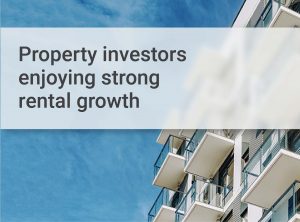Some interesting property and finance news for you to enjoy:October-2021
• Home loan rules tightened
• House rents grow 5.5%
• Be wary of buy-now-pay-later
• ABS releases lockdown data
Read the latest news below.
Australia’s banking regulator, APRA, has introduced new lending rules that will reduce
the maximum amount some people can borrow.

When you apply for a mortgage, lenders are required to assess your ability to repay the loan not on the actual interest rate, but on the interest rate plus a buffer.
Previously, the buffer was a minimum of 2.50 percentage points; now, APRA has told lenders to increase it to 3.00 percentage points. So if you applied for a loan with an interest rate of 2.09%, lenders would have to assess whether you could repay the loan if the rate increased to at least 5.09%.
APRA expects this change will reduce the average person’s borrowing capacity by about 5%.
However, each person’s situation is unique. Some borrowers may not experience any reduction in their borrowing capacity. Others might experience a larger impact.
In this new home loan environment, it’s never been more important to get help from an expert broker who’s fully across the new rules. As your broker, I can:
• Maximise your borrowing capacity so you can buy your dream home
• Show you how your borrowing capacity can change from lender to lender
• Compare dozens of lenders and hundreds of loans for you
See how much you can borrow now

House rents have climbed strongly in many parts of Australia, while some unit markets have also enjoyed strong growth, according to Domain.
Over the year to September, capital city house rents increased by an average of 5.5% and six capital cities experienced double-digit growth.
During the same period, capital city unit rents decreased by an average of 2.1% – although rents actually increased in six capitals.
The reason rents are rising in many parts of Australia is due to an undersupply of rental properties; this has led to increased tenant demand for the limited amount of accommodation.
In Perth, Adelaide, Hobart, Canberra and Darwin, the vacancy rate (the share of untenanted rental properties) is under 1.0%, according to SQM Research, which is incredibly low. In Brisbane, the vacancy rate is 1.4%, which is also low.
But in Sydney and Melbourne, where rental growth is weaker, vacancy rates are above 2.5%.
This is a good time to be a property investor, with rents rising, prices rising and vacancy rates falling in many parts of the country. Conditions are favoring landlords and those looking to enter the market.
Get in touch if you want to enter the market

The use of buy-now-pay-later services has surged in recent years, more than doubling between 2018 and 2021, according to Roy Morgan. Meanwhile, credit cards are also used by a lot of Australians.
While both buy-now-pay-later services (BNPL) and credit cards have pros and cons, you might not realise that using them can affect your mortgage borrowing power.
If you regularly use BNPL, lenders might think you’re struggling to manage your finances, and wonder how much they could safely afford to loan you.
If you have a credit card, lenders will assume you’re going to spend up to your limit each month. So if your limit is $10,000, lenders will assume you’ll ‘borrow’ $10,000 each month. That will make it look like you have more debt, and therefore reduce how much money banks are willing to loan you.
And if you miss BNPL or credit card repayments, lenders will be even more concerned.
If you want to maximise your borrowing power you should:
• Reduce or eliminate your use of BNPL services
• Lower your credit card limit or cancel your card
• Make all your repayments on time Contact me if you need home loan advice
New data from the Australian Bureau of Statistics has revealed the winners and losers from the widespread lockdowns that occurred in July and August.
Accommodation & food services was the industry that suffered the biggest fall, with the industry experiencing a 16.6% month-on-month decline in turnover in July and then another 6.5% decline in August.
Construction (-2.9% and -0.1%) and other services (-2.2% and -5.5%) were the only other industries to experience turnover declines in both July and August.
Conversely, the mining sector increased its turnover by 4.6% in July and 0.1% in
August.
Manufacturing (1.2% and 0.9%) and wholesale trade (0.6% and 1.0%) also expanded in both months.
I hope you and your family are enjoying the spring sunshine.
If any of you need help, feel free to get in touch. Book a Free Appointment
Robyn Roberts
0418 616 630

